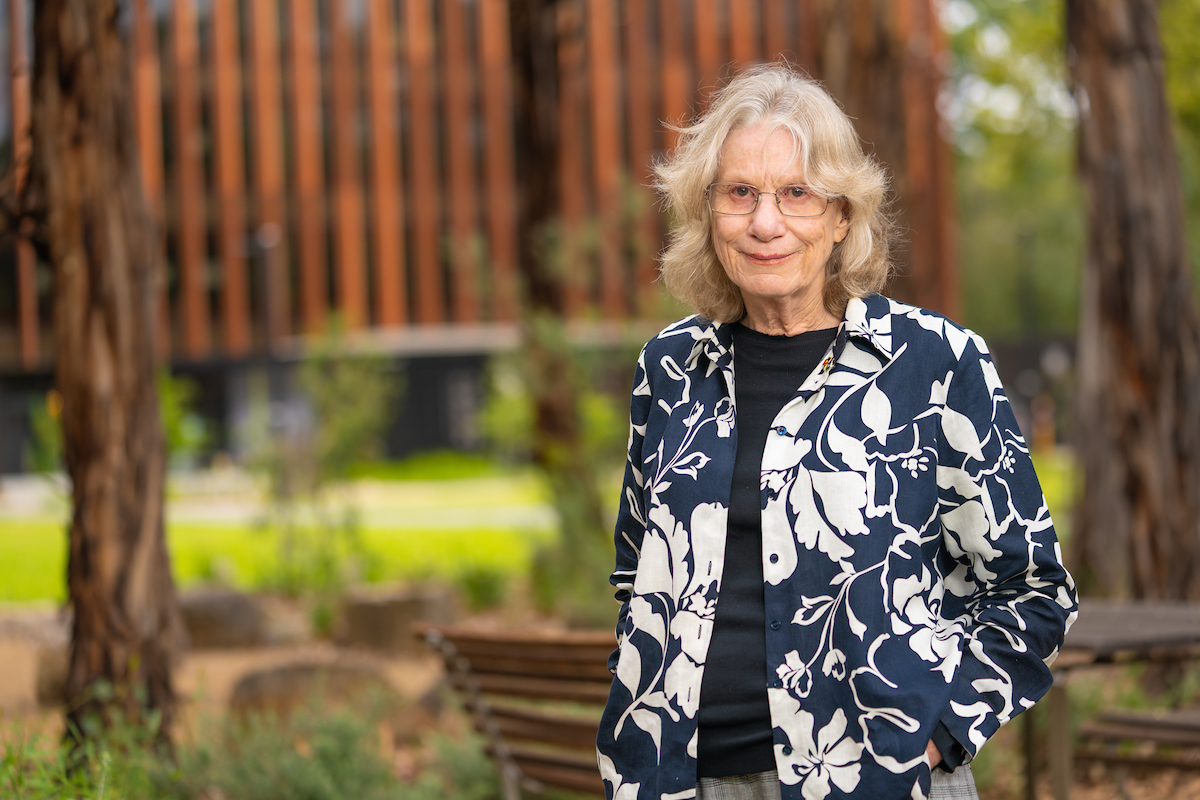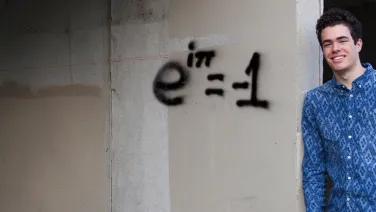Maths has no borders: Professor Rowena Ball brings Indigenous mathematics to ANU

What constitutes mathematical knowledge? What is included in mathematics? Who gets to decide? These are some of the questions being asked in a growing decolonisation movement.
“Mathematics is a universal human phenomenon, and students of under-represented and minority groups and colonised peoples are starting to be more critical about accepting unquestioningly the cultural hegemony of mainstream European-based mathematics,” says Professor Rowena Ball from the ANU Mathematical Sciences Institute.
Professor Ball leads a research and teaching initiative called Mathematics Without Borders, aimed at broadening and diversifying the cultural base and content of mathematics.
“Mathematics has been gatekept by the West and defined to exclude entire cultures. Almost all mathematics that students have ever come across is European-based,” she explains. “We would like to enrich the discipline through the inclusion of cross-cultural mathematics.”
“Indigenous and First Nations peoples around the world are standing up and saying: ‘Our knowledge is just as good as anybody else's − why can't we teach it to our children in our schools, and in our own way?’
“And this is happening in New Zealand, North and South America, and Africa, and also in a great movement in India to revive traditional Indian mathematics.”
Here, in Australia, we are still in the early stages of the decolonisation journey. There is a curiously persistent trope that Aboriginal and Torres Strait Islander peoples had only rudimentary mathematical knowledge, despite widespread evidence to the contrary.
Just fourteen years ago, an article in the Australian Mathematical Society Gazette argued that “attempts to discover an Indigenous Mathematics are…ill-directed…There is no indigenous tradition of mathematics, properly so-called, in this country.”
There’s a lot to unpack in that statement. In an article co-authored by Professor Ball, she goes on to debunk it, along with other colonial ideas that shaped maths courses from our early childhood to tertiary education.
“There is a lot of gatekeeping going on,” Professor Ball says of having to justify Indigenous maths. “One effect of colonisation of the curriculum is defensive protection of what is thought to be an exclusively European and British provenance of mathematics.”
“Like most mathematicians I was educated in European and British mathematics,” says Professor Ball, “and it’s fine stuff – I still love my original research field in dynamical systems.” But that mathematics did not develop in isolation, she says, and now there’s even more to learn about how non-Western societies have been seeing the world mathematically that many of us haven’t yet tuned into.
“What the general public think of as mathematics tends to be whatever they learned (or, more likely, did not learn) at school. But in many Indigenous societies, mathematics is lived from when you are born to when you rejoin your ancestors,” Professor Ball says.
“It’s about formalised relationships within human society and with every element of the environment. Everyone is taught them. And the levels go up from birth to adulthood, as you are ready for more knowledge. This mathematics permeates every aspect of life.”
Numbers and arithmetic and accounting often are of secondary importance in Indigenous mathematics.
“In fact, as most mathematicians know, mathematics is primarily the science of patterns and periodicities and symmetries − and recognising and classifying those patterns.”
Indigenous societies often excel at non-numerical mathematics, she says.
“One interesting example that we are currently investigating is the use of chiral symmetry to engineer a long-distance smoke signalling technology in real time,” Professor Ball says. “If you light an incense stick you will see the twin counter-rotating vortices that emanate − these are a chiral pair, meaning they are non-superimposable mirror images of each other.”
A memoir by Alice Duncan Kemp, who grew up on a cattle station on Mithaka country in the early 1900s, vividly describes the signalling procedure, in which husband-and-wife expert team Bogie and Mary-Anne selected and pulsed the smoke waves with a left to right curl, to signal "white men", instead of the more usual right to left spiral.
Mithaka country is southwest Queensland − Kurrawoolben and Kirrenderri (Diamantina) and Nooroondinna (Georgina) river channel country − and for thousands of years this region was a rich, well-populated cultural and trade crossroads of the Australian continent.
To create and understand these signals, you have to be a skilled practical mathematician, Professor Ball says.
“Theory and mathematics in Mithaka society were systematised and taught intergenerationally. You don’t just somehow pop up and suddenly start a chiral signalling technology. It has been taught and developed and practised by many people through the generations.”
At that time in the early twentieth century, British meteorologists were just beginning to understand the essential vortical nature of atmospheric flows.
“Imagine if the existing Indigenous Mithaka knowledge of vorticity had been recognised, nurtured and protected? In what ways may it have fed into the high performance, numerical weather forecasting capabilities that we all rely on now?” she asks.
There is growing support for decolonising maths in universities, schools, and more broadly, says Professor Ball.
That’s what she found when she co-created a special topics course based on the Mathematics without Borders research program, in an effort to introduce new ideas about decolonisation and truth-telling in mathematics history.
“Our work has received amazing support from the MSI Director, Professor Ferrario, the College of Science, and the university as a whole.”
But the students themselves – who will be the next generations of mathematicians – have provided the strongest endorsement. In course feedback, one student said: “Recognising that all cultures have contributed to the development of mathematical thought was both empowering and humbling.”
“My aim is to grow a cohort of Indigenous students in mathematics, through research on Indigenous mathematical knowledge and its development in a modern global context. If our work can achieve that, nothing would make me happier for the students to then take over and continue to move it forward!” says Professor Ball.



